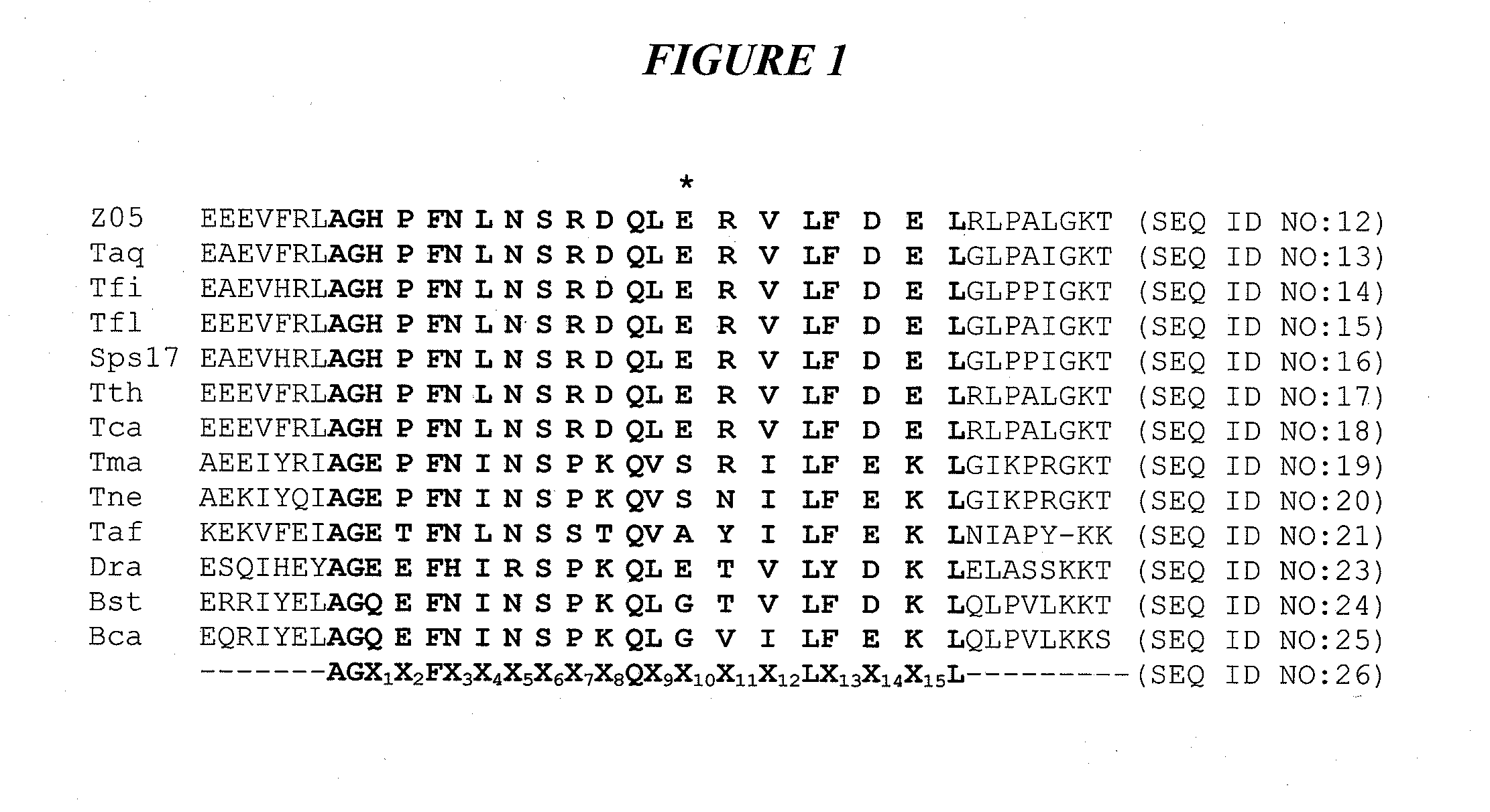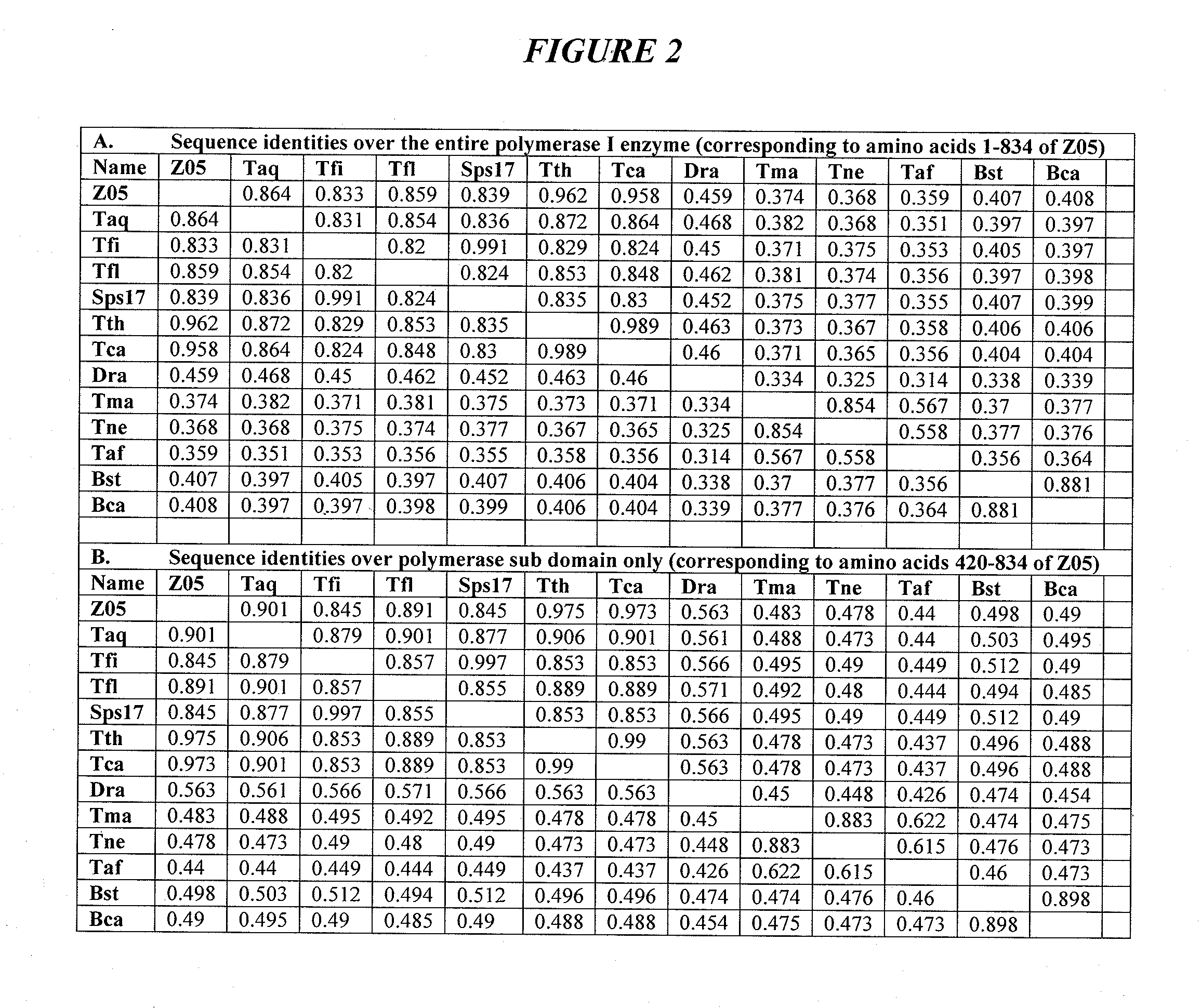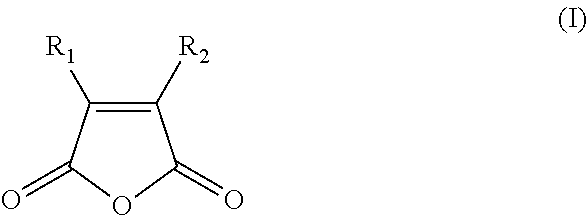DNA polymerases with increased 3'-mismatch discrimination
a technology of dna polymerases and mismatches, which is applied in the direction of transferases, bulk chemical production, peptides, etc., can solve the problem of difficult detection of the presence of a target nucleic acid sequence without amplification, and achieve the effect of increasing intensity
- Summary
- Abstract
- Description
- Claims
- Application Information
AI Technical Summary
Benefits of technology
Problems solved by technology
Method used
Image
Examples
example 1
Identification of Mutant DNA Polymerases with Increased 3′-Mismatch Discrimination
[0212]Mutations in Z05 D580G polymerase were identified that provide a reduced ability to extend an oligonucleotide primer with a 3′-mismatch to a template. In brief, the steps in this screening process included library generation, expression and partial purification of the mutant enzymes, screening of the enzymes for the desired property, DNA sequencing, clonal purification, and further characterization of selected candidate mutants. Each of these steps is described further below.
[0213]Clonal Library generation: A nucleic acid encoding the polymerase domain of Z05 D580G DNA polymerase was subjected to error-prone (mutagenic) PCR between Blp I and Bgl II restriction sites of a plasmid including this nucleic acid sequence. The amplified sequence is provided as SEQ ID NO:33. The primers used for this are given below:
(SEQ ID NO: 31)Forward Primer: 5′-CTACCTCCTGGACCCCTCCAA-3′;and,(SEQ ID NO: 32)Reverse Pri...
example 2
Taq DNA Polymerase with E491K Mutation
[0227]This example shows that a mutation at the E491 position of Taq DNA polymerase results in increased 3′-mismatch discrimination.
[0228]The homologous amino acid position to E493 in Z05 DNA polymerase is E491 in Taq DNA polymerase. A synthetic DNA fragment containing an E491K (Lysine) mutation was cloned into Taq DNA polymerase and the expressed protein was purified and quantified. Taq E491K DNA polymerase was then compared to the parental Taq DNA polymerase in an allele-selective PCR assay.
[0229]The control DNA polymerase of this example is a Thermus sp. Taq DNA polymerase of SEQ ID NO:2.
[0230]Primers were used that amplify a region of the human BRAF gene and are perfectly matched to the target when said target carries a mutation in codon 600 of BRAF, V600K. Against wild-type BRAF target, present in human genomic DNA, the allele selective primer results in a single A:C mismatch at the 3′ end. The common primer is perfectly matched to the BRAF...
example 3
Identification of Additional Mutant Polymerases with Increased 3′-Mismatch Discrimination
[0234]This example shows that polymerases having a mutation at position 5488 of a Thermus sp. Z05 DNA polymerase have increased 3′-mismatch discrimination.
[0235]The control DNA polymerases of this example are a Thermus sp. Z05 DNA polymerase of SEQ ID NO:1 and a Thermus sp. Z05 DNA polymerase of SEQ ID NO:1 except that the amino acid at position 580 is glycine (e.g., a D580G substitution) (hereinafter Z05 D580G polymerase).
[0236]Reactions were in duplicate, crossing points (“Cps”) were calculated by the Abs Quant / 2nd derivative Max method and the Cps were averaged. PCR efficiency was calculated from the slope of the 100 and 10,000 copy perfect match plasmid reactions at the KCl concentration which resulted in the earliest 10,000 copy perfect match plasmid Cp. High Copy delta Cp is equal to the difference between the Cp values of the reactions with 10,000 copy of 3′-mismatched wild-type genomic t...
PUM
| Property | Measurement | Unit |
|---|---|---|
| temperatures | aaaaa | aaaaa |
| temperature | aaaaa | aaaaa |
| temperature | aaaaa | aaaaa |
Abstract
Description
Claims
Application Information
 Login to View More
Login to View More - R&D
- Intellectual Property
- Life Sciences
- Materials
- Tech Scout
- Unparalleled Data Quality
- Higher Quality Content
- 60% Fewer Hallucinations
Browse by: Latest US Patents, China's latest patents, Technical Efficacy Thesaurus, Application Domain, Technology Topic, Popular Technical Reports.
© 2025 PatSnap. All rights reserved.Legal|Privacy policy|Modern Slavery Act Transparency Statement|Sitemap|About US| Contact US: help@patsnap.com



